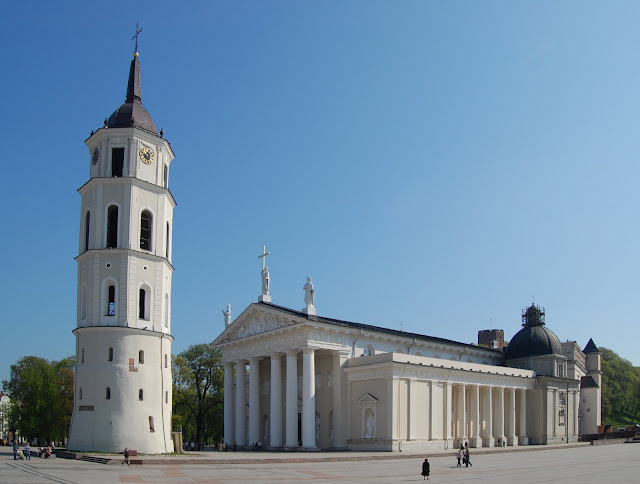Vilnius Cathedral built on the shrine of Perkunas
Apart from a few tribes in the depths of the remote Russian forests, the Lithuanians were the last European people to be Christianized, finally submitting to the Church in 1387.
More than a century earlier, in 1251, the Lithuanian king Mindaugas had converted to Christianity and built a church on what would later be the site of Vilnius cathedral. As was usually the case, the site of the church was formerly a holy pagan site, this one having a shrine dedicated to the Lithuanian thunder god Perkunas.
After Mindaugas's death in 1263, the site reverted back to paganism until a cathedral was built there in 1387. The shrine at Vilnius may possible have been "Romuva," the residence of the "pagan pope" mentioned in Peter von Dusburg's "Chronicon terrae Prussiae," a chronicle written for the Teutonic Knights in 1326.
More than a century earlier, in 1251, the Lithuanian king Mindaugas had converted to Christianity and built a church on what would later be the site of Vilnius cathedral. As was usually the case, the site of the church was formerly a holy pagan site, this one having a shrine dedicated to the Lithuanian thunder god Perkunas.
After Mindaugas's death in 1263, the site reverted back to paganism until a cathedral was built there in 1387. The shrine at Vilnius may possible have been "Romuva," the residence of the "pagan pope" mentioned in Peter von Dusburg's "Chronicon terrae Prussiae," a chronicle written for the Teutonic Knights in 1326.


























No comments:
Post a Comment